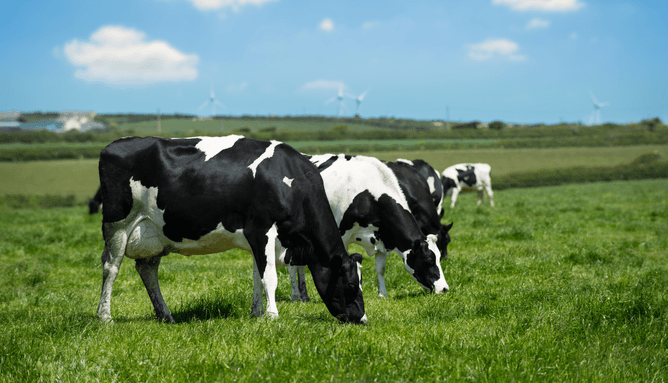Summer season is upon us and it won’t be long before peak humidity and warm temperatures hit us at the start of the year. While it may be beach weather for us, it is also facial eczema (FE) weather for our dairy cows, as these are perfect conditions for the fungus to reproduce on our pastures.
The fungus itself is not a big deal in small quantities. But, some warm nights and a couple of light showers during late summer to early autumn are enough to cause a sudden boom in spore counts.
Exposure to pasture with high levels of the FE spores leads to liver and bladder damage. A couple of weeks after ingestion, you may notice your cows become more agitated or depressed (if FE is severe), they may have elevated heart rates or temperatures, and they can also have red urine. The most obvious sign of FE would be severe inflammation of the white areas of their skin, which can become thickened and crusty over time. This can even affect areas that have bare skin, like eyelids, teats and even the cow’s vulva.
Managing the risk period
To prevent FE from doing damage to our cows’ health and performance, there are a few things we can do before and during the FE risk period:
Monitor spore levels! This is one of our most important tools in assessing a farm’s risk levels. Farmers can request spore counts for their own farm through the clinic, or can base their management on the spore counts that are being done within their district
<30,000 spores = mild risk. Start prevention once counts are >30,000
30,000 - 60,000 spores = moderate risk.
>60,000 spores = high risk.
Changing grazing strategies. The fungus grows in the dead litter at the base of the grass, so rotating your stock before they graze down too low will reduce their risk of ingesting the spores.
Planting alternative grass species or crops (such as chicory or tall fescue) decreases the risk of dead material build-up in the soil. Alternatively, treating the pasture with antifungal sprays may also work for your farm.
Zinc supplementation. Zinc binds to the spore which enables it to be safely excreted from the liver. However, it is important to note that zinc toxicity (which has similar signs to FE) can also become a problem, so correct dosing is key. There are many ways to supplement zinc, so talk to your KeyVet to determine which way works best for your system.
Keen to monitor?
Our clinic will be providing spore counts from our monitor farms as the weather gets warmer. This should give us a good idea of spore levels around the Morrinsville area to help our clients make decisions around FE management.
If you are keen to know the specific spore count levels for your farm, bring in a paper bag full of grass from the same paddocks throughout the season to get an average farm score.We have spore counting paper bags available at the clinic.
If you find cows affected with FE, remove them from the affected pasture as soon as possible. Providing pain relief and antihistamines are a must. Antibacterial sunscreen (.g. Filtabac) and giving them lots of access to shade will help reduce the damage on the skin. And, as always, don’t hesitate to contact your KeyVet for advice.
Source: Massey University

